JUNGLES UNDER ARCTIC ICE?
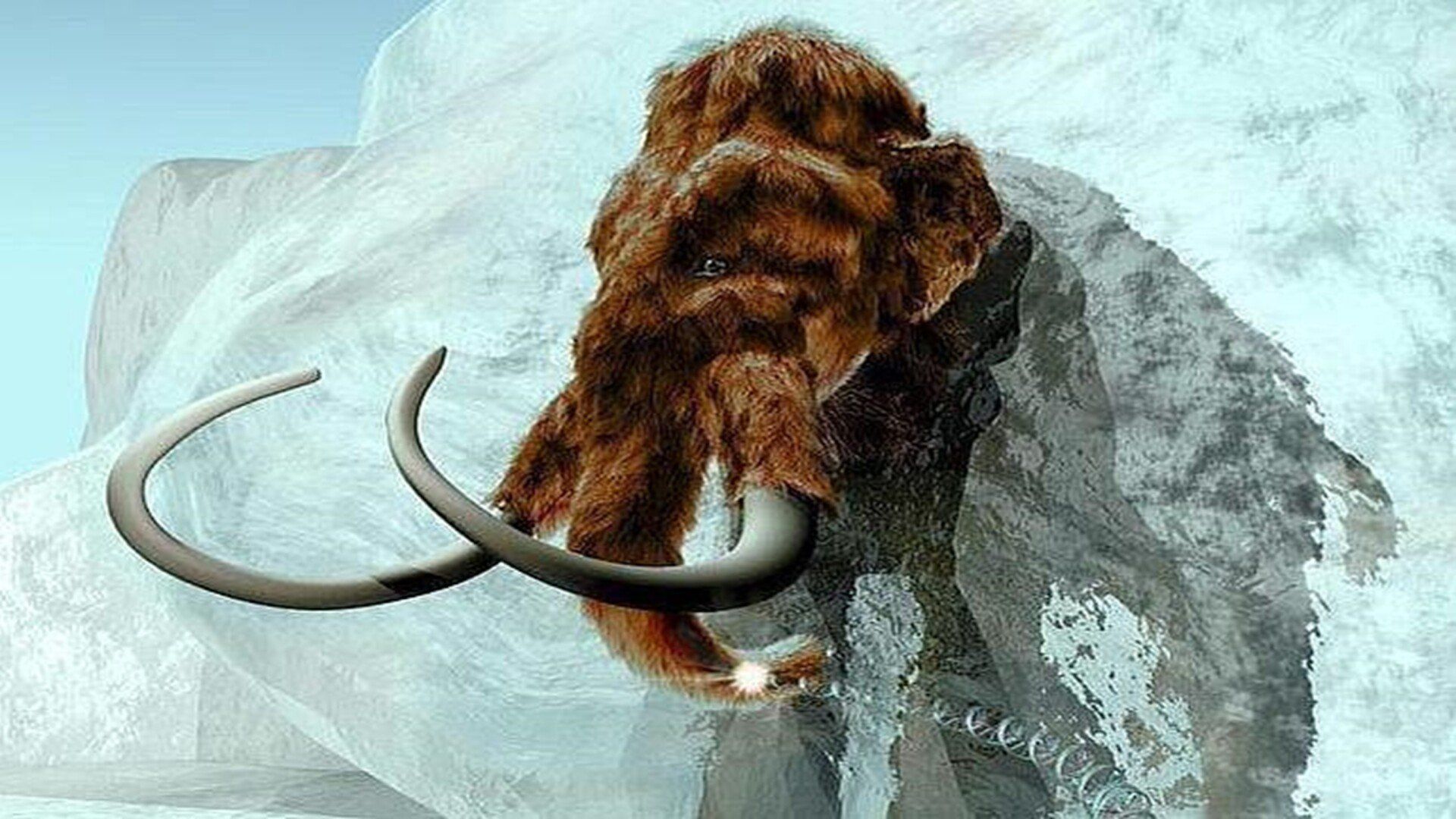
THE MYSTERY OF ARCTIC JUNGLES!
Political activists are increasingly alarmed at the prospect of earth warming. According to their leaders, the entire world is in danger of destruction by the melting of Arctic and Antarctic ice.
The fascinating thing is that oil prospectors drilling in the vast regions of the Arctic are discovering that there was once a huge tropical jungle, now frozen below 1,100 to 1,700 feet of ice. The drilling rigs bring up parts of fruit and palm trees along with the frozen remains of tropical animals. These things are strangely ignored and unreported by the mainstream media!
An arctic jungle under a thousand feet of ice? How can that be?
The Russian government knows that an incredible amount of oil is preserved below the arctic ice-cap and they have staked their claim to the region. On August 5, 2015, the New York Times reported that Russia formally claimed a vast area of the Arctic Ocean, including the North Pole. This will give Russia total economic oversight including fishing rights, oil and gas drilling privileges, plus all mineral rights. First come, first served!
Russia has now erected a huge five-story complex affirming their claims to the far north. Their strong military presence is proof that they plan to stay and protect their new jackpot. And all this time we thought that Santa Claus was the king of the North Pole!
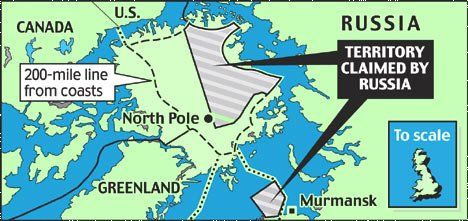
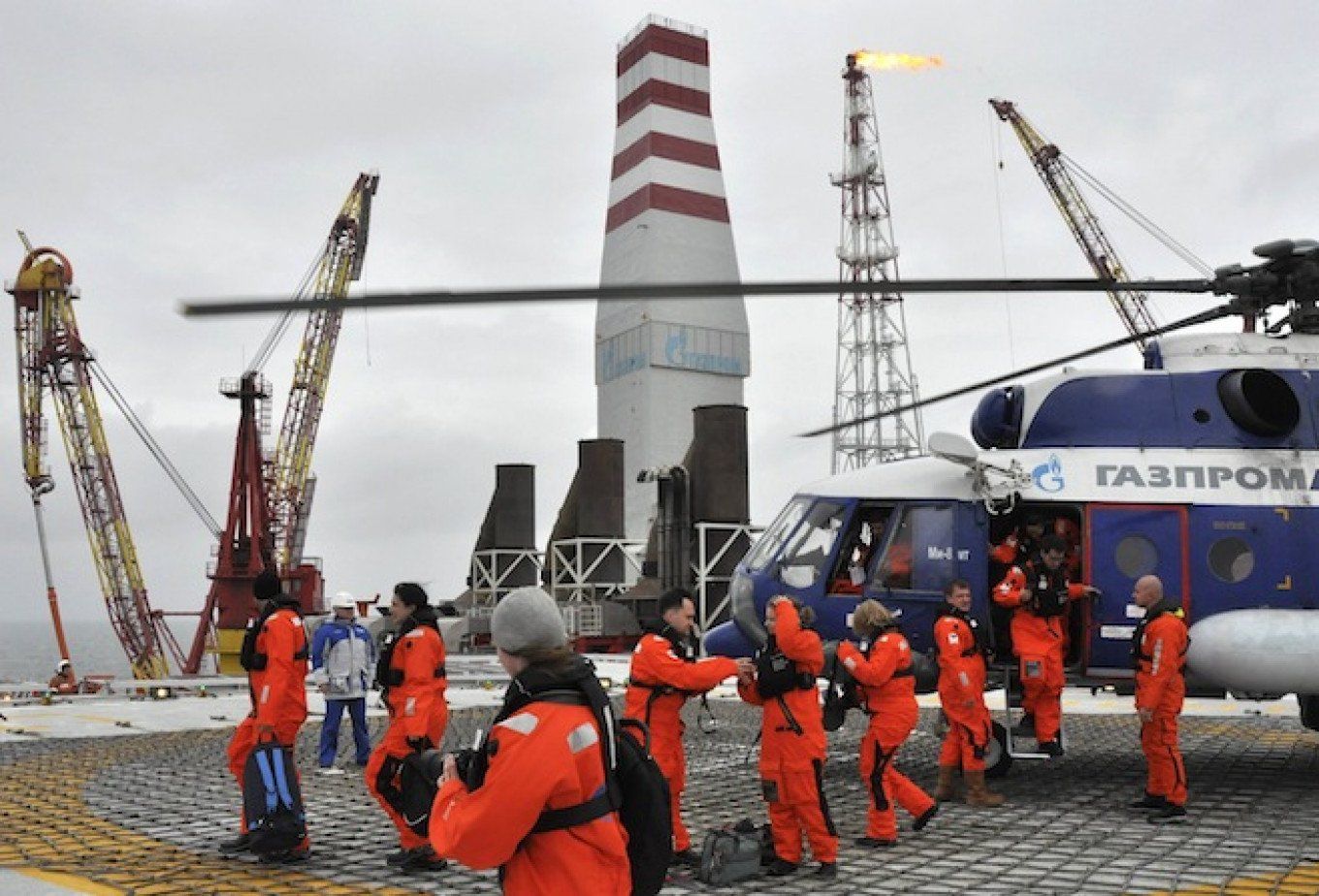
QUESTION: WHAT ARE FOSSIL FUELS DOING UNDER THE POLAR ICE CAP?
There are huge reserves of coal, oil and gas buried in strange places — such as below deserts, oceans, and even the Arctic and Antarctic ice caps. Fossil fuels are made up of plants and animals from one-time tropical forests. Knowledge of the presence of these rich deposits is nothing new as we read in this 100 year-old report:
“Within the Arctic Circle vast amounts of coal (the remains of tropical animals and vegetation) as well as other forms of tropical plants are found. We also find in and around the Arctic Circle the remains of crocodiles, elephants, lions, and other known tropical animals.” (Petroleum Age, January 1917, Volume 4, Page 38)
WORLD-WIDE TROPICAL PARADISE:
Evidence abounds that the earth was once a tropical paradise from North Pole to South Pole.
Apparently a huge vapor barrier once covered the entire globe creating a “greenhouse effect” and a uniformly warmer climate than we experience today. The globe was like a gigantic terrarium.
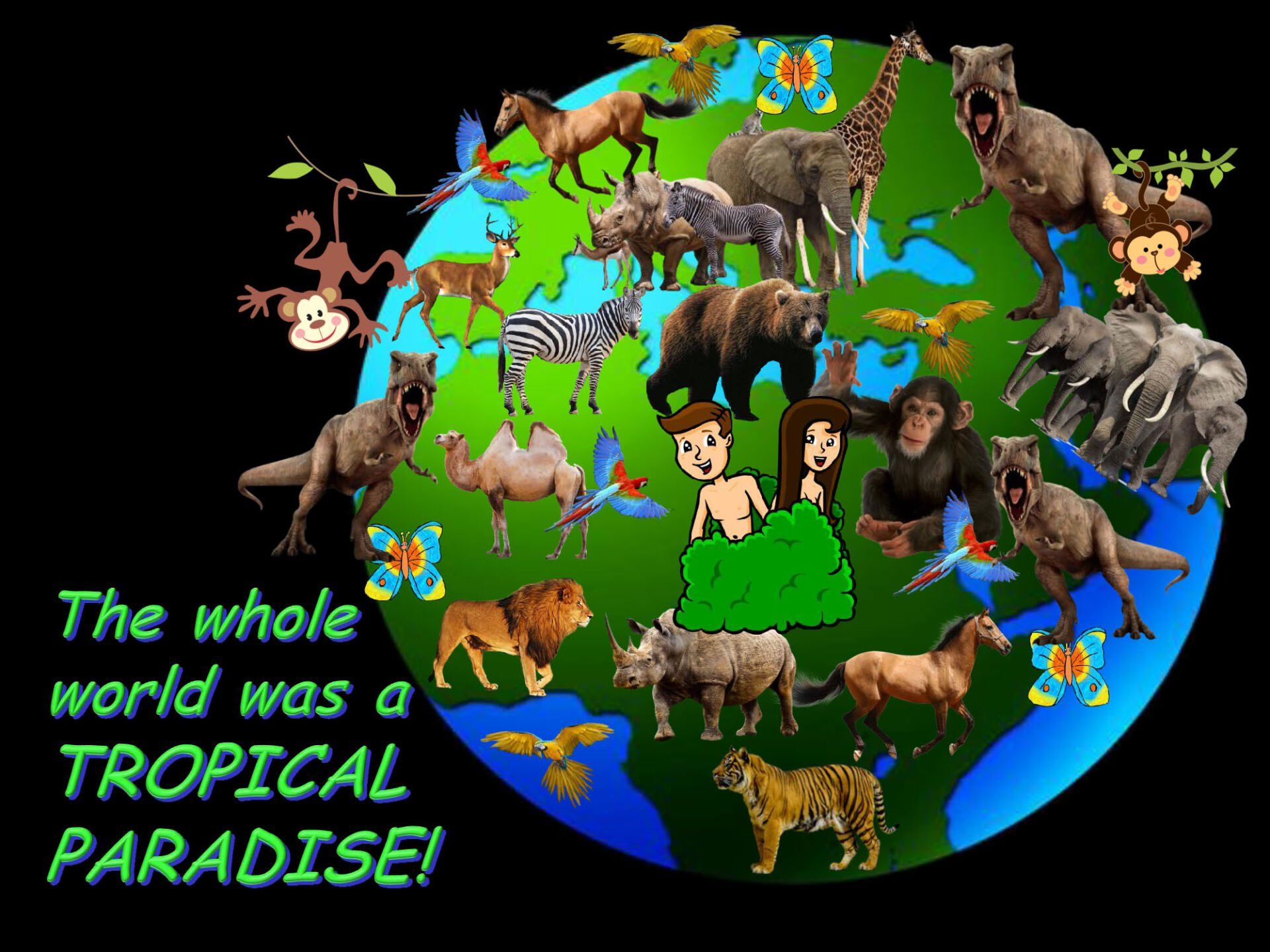

ARCTIC COAL RESERVES:
Coal reserves in the polar regions show that tropical forests once grew in great abundance where there is now nothing but ice. A huge 90-foot fruit tree with ripe fruit and green leaves still on its branches has been discovered in the frozen soils of the New Siberian Islands, where now only 1-inch high willows grow.
Palm tree fossils have also been found in Alaska. Grasses, bluebells, buttercups and wild beans as fresh as the day they were eaten have been found in the mouths and stomachs of frozen mammoths.
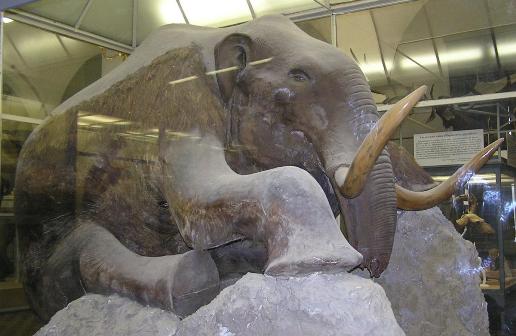
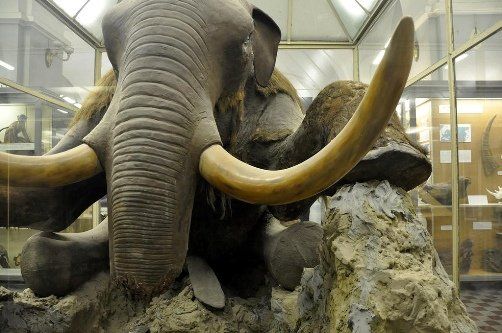
THOUSANDS OF MAMMOTHS FROZEN AND PRESERVED:
The most famous of the mammoths can be found in the Zoological Museum in St. Petersburg, Russia. It was discovered in a freshly eroded river bank, 100 feet above Siberia’s Berezovka River in 1900.
The following information about the Berezovka Mammoth was reported in an article entitled Frozen Mammoth: “Much of the head, which was sticking out of the bank, had been eaten down to the bone by local wolves and other animals, but most of the rest was perfect. Most important, however, was that the lips, the lining of the mouth and the tongue were preserved. Upon the last, as well as between the teeth, were portions of the animal’s last meal, which for some almost incomprehensible reason it had not had time to swallow. The meal proved to have been composed of delicate sedges and grasses.
“Another account states that the mammoth’s “mouth was filled with grass, which had been cropped, but not chewed and swallowed” (A. S. W., Nature, Vol. 68, July 30, 1903, p. 297). The grass froze so rapidly that it still had “the imprint of the animal’s molars” (Lister & Bahn, Mammoths: Giants of the Ice Age, p. 74). Hapgood’s translation of a Russian report mentions eight well-preserved bean pods and five beans found in its mouth (Charles H. Hapgood, The Path of the Pole, 1970, p. 267).
“Twenty-four pounds of undigested vegetation were removed from the Berezovka mammoth and analyzed by the Russian scientist, V. N. Sukachev. He identified more than forty different species of plants: herbs, grasses, mosses, shrubs, and tree leaves. Many no longer grow that far north; others grow both in Siberia and Mexico. Dillow draws several conclusions from these remains:
1. The presence of so many varieties [of plants] that generally grow much to the south indicates that the climate of the region was milder than that of today.
2. The discovery of the ripe fruits of sedges, grasses, and other plants suggests that the mammoth died during the second half of July or the beginning of August (Joseph C. Dillow, The Waters Above: Earth’s Pre-Flood Canopy, 1981, pp. 371-377).
“Abundant food requires a temperate climate — much warmer than northern Siberia today. Only a small percentage of the food found in Berezovka’s mouth and stomach grows near the Arctic Circle today. Furthermore, the flower fragments in its stomach show that it died during warm weather. Despite the popular misconception, the mammoth was a temperate, not an Arctic, animal.”
WHAT CAUSED THESE TROPICAL ANIMALS TO BE INSTANTLY FROZEN?
Speculation abounds, of course, about what could have frozen thousands of tropical animals, many of them while still on their feet.
Scientists tell us that the Berezovka mammoth suffocated from snow and mud and was instantly frozen preserving the grasses it still had in its mouth. They also confirm that the weight of the falling ice and mud was so great that it broke the back hips of the entombed creature!
A missionary and explorer by the name of Evariste Regis Huc reported a fascinating story from Tibet in 1846. After several of his party had frozen to death the survivors pitched their tents on the banks of the Mouroui-Oussou River. Huc reported —
“At the moment of crossing the Mouroui-Oussou, a singular spectacle presented itself. While yet in our encampment, we had observed at a distance some black shapeless objects ranged in file across the great river. No change either in form or distinctness was apparent as we advanced, nor was it till they were quite close that we recognized in them a troop of the wild oxen. There were more than fifty of them encrusted in the ice.
No doubt they had tried to swim across at the moment of congelation [freezing], and had been unable to disengage themselves. Their beautiful heads, surmounted by huge horns, were still above the surface; but their bodies were held fast in the ice, which was so transparent that the position of the imprudent beasts was easily distinguishable; they looked as if still swimming, but the eagles and ravens had pecked out their eyes” (Evariste Regis Huc, Recollections of a Journey through Tartary, Thibet [Tibet], and China, During the Years 1844, 1845, and 1846. Vol. 2 (New York: D. Appleton & Co., 1852), pp. 130-131).
A SCHOOL OF FROZEN FISH:
In addition to frozen mammoths and other tropical animals, fish have also been found that were found frozen instantly. In 1942, during a road construction project along the Liglikhtakha River in Northern Russia, workers reported frozen fish to be of amazing freshness, and that chunks of meat thrown out by a construction explosion were eaten by those present. (Y.N. Popov, “New Finds of Plestocene Animals in Norther USSR,” Nature, No 3, 1948, p. 76)
These poor creatures were killed instantly and still in a group as they were swimming in the river! An article in The Readers’ Digest Book of Strange Stories and Amazing Facts reported that frozen-food experts had been asked their opinion on the frozen mammoths. Their verdict? “To deep-freeze a huge living mammoth, insulated in thick fur, stupendously cold temperatures of below -150 degrees F would be required . . . apparently, at one moment the mammoth was munching away peacefully at the grass and butter-cups growing lush in the sunshine of a temperate plane. The next moment it was subjected to cold so bitter that it was deep frozen where it stood.”
Many mammoths and other animals have been found in a standing position, surrounded by frozen silt. Their body tissues and stomach contents had not even begun to decompose.
WHAT CAUSED THIS INCREDIBLE CHANGE FROM A TROPICAL PARADISE TO A FROZEN WILDERNESS?
This was obviously NOT a result of a slow moving ice age or normal storm. This was an instant catastrophic event. We will examine this more in a following article soon to follow.
